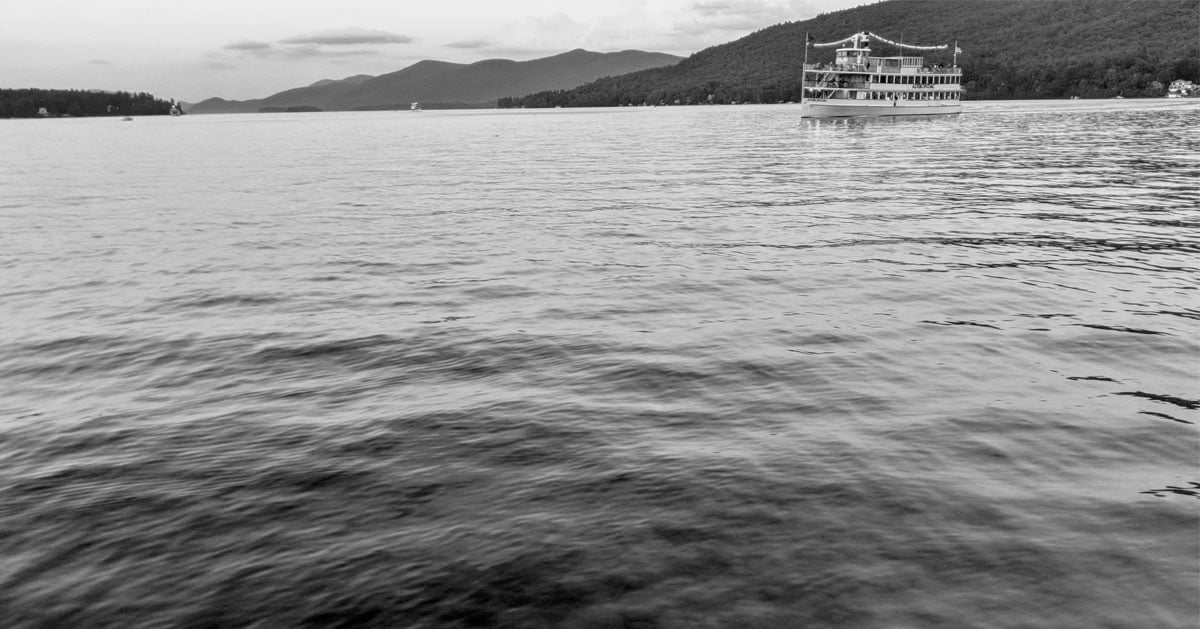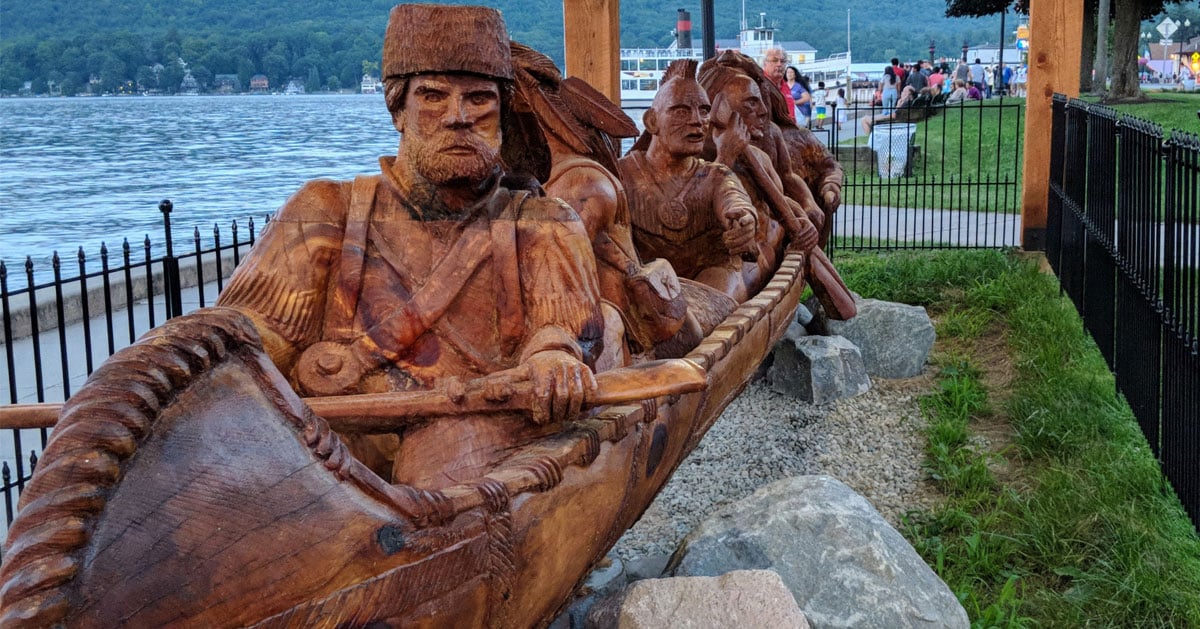Self-Guided Colonial Wars Walking Tour
Lake George played a pivotal role during the early history of this country and has many historic sites, monuments, and markers which tell this history. Home to Native Americans for 10,000 years, the lake became a bloody arena during the clashes between the French and English empires, was the scene of military action as American patriots wrestled the 13 colonies from the British, and later was a commercial "highway" where various watercraft plied its pristine waters.
During colonial times, Lake George served a critical role as the lake itself was a crucial part of the natural navigation system running south to north. Control this important corridor, and you controlled the entire region.
You can learn more about the fascinating history of Lake George and see these sites for yourself through this self-guided Colonial Wars Walking Tour.
Jump to: Setting the Stage For War | Important Dates & Conflicts | Details On The Tour | Each Stop On the Walking Tour

The Iroquois and the Algonquin Native Americans bitterly contested control of the Lake George area. In 1609, French explorer Samuel de Champlain, along with his Algonquin, Huron, and Montagnais allies, defeated a superior force of Iroquois in the Champlain Valley. This battle cemented opposing alliances in future conflicts, wherein the Algonquin supported the French and the Iroquois the English.
In 1689, the first of four major colonial wars between the French and English began. There was little military action from these wars in the Lake George area, and all three wars ended without either side gaining a conclusive victory. These three conflicts were King William's War (1689 to 1697), Queen Anne's War (1702 to 1713), and King George's War (1744 to 1748).
By 1754, British and Colonial authorities became concerned over French forts being constructed along the Ohio River Valley frontier. Following two military encounters in southwest Pennsylvania, a final confrontation between the French and English in North America became inevitable.
The British strategy in 1755, under the leadership of General Braddock, was for the British and their colonial allies, called provincials, to take Forts Duquesne, Niagara, St. Frederic, and Beausejour (Nova Scotia). This war began in North America as the French & Indian War (1754-1763) and in Europe as the Seven Years' War (1756-1763).
The British plan started off badly. General Braddock was defeated and killed in 1755 near Fort Duquesne and the provincials never got to Niagara, becoming bogged down at Oswego. Soon, however, the British gained ground.
Lieutenant Colonel Robert Monckton forced thousands of Acadians in present-day Nova Scotia from their homes. And, General William Johnson with provinicial troops defeated the French in the Battle of Lake George. With this beginning, Lake George was the scene of momentous warfare during both the French and Indian War and the American Revolution (1775 to 1783).
Important Historical Dates and Conflicts Involving Lake George
- September 8, 1755 - The Battle of Lake George was fought at the south end of the lake. This was a great British victory over the French and their Native American allies.
- March 1757 - The French crossed ice-covered Lake George and attacked Fort William Henry. However, the French retreated after they were unable to seize the fort.
- August 1757 - The French again attacked Fort William Henry and the entrenched camp in what is now Lake George Battlefield Park. This time the British surrendered and the French burned the fort before departing.
- July 1758 - 15,000 British and provincials left the south end of Lake George and attacked French-held Fort Carillon (Ticonderoga) on Lake Champlain. There the British were defeated.
- 1759 - The British under General Jeffery Amherst pushed beyond Lake George to Lake Champlain. The British seized Fort Carillon, renamed it Fort Ticonderoga, and then occupied Fort St. Frederic (Crown Point). During this campaign, Fort George in the Lake George Battlefield Park was constructed.
- 1763 - The Treaty of Paris ended the French & Indian War with the British victorious.
- The American Revolution - Lake George was the scene of warfare with the Battle at Diamond Island in 1777, and several military actions at Fort George including Carleton's Raid in 1780. Also, located here was the smallpox hospital for the American army in 1776.
What to Expect From the Walking Tour & Each Stop

The Colonial Wars in Lake George Walking Tour is 3.3 miles long and takes approximately two hours to complete. Because this is self-guided tour, you can opt to begin at any point along the loop, you can visit each stop over the course of a few days, and you can even use a vehicle if you prefer.
Please maintain the integrity of the historical and natural sites. Restrooms are located along the route.
Below, find links to further information on each stop:
1) The Old Courthouse
2) Artillery Cove
3) Montcalm's Camp
4) Sunken Fleet
5) Montcalm's Entrenchments
6) Warship Row and the Mayor Robert M. Blais Walkway and Park
7) Lake George Steamboat Company and Steel Pier
8) Military Dock
9) Radeau Warship
10) Battle of Lake George: September 8, 1755
11) Fort George Ruins
12) Entrenched Camp 1757
13) Native American Historic Statue
14) Unknown Soldiers Historic Monument
15) Stockaded Fort 1759
16) Knox Cannon
17) Smallpox Hospital 1776
18) Battlefield Park Visitor Interpretive Center
19) Father Jogues
20) Fort William Henry
21) Fort William Henry Cemetery and Memorial
Posting on this site is with the permission of the Lake George Battlefield Park (Fort George) Alliance.